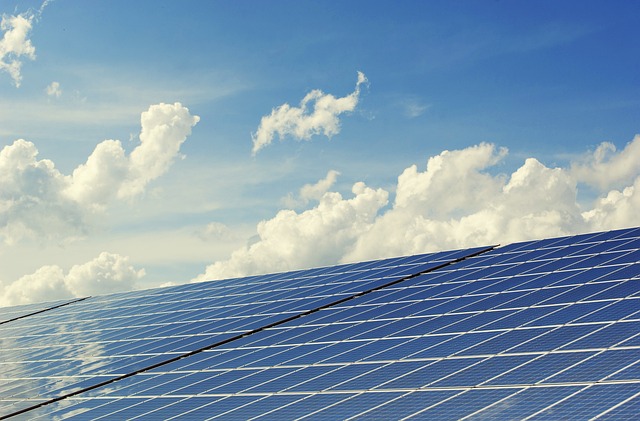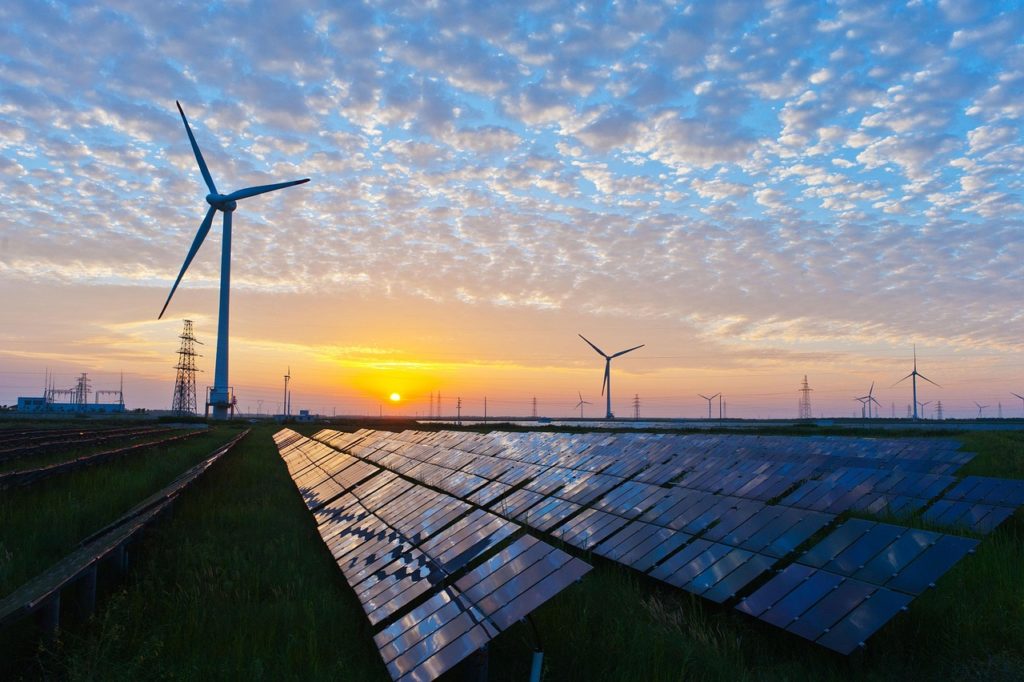Hey there! Have you ever wondered about the possibility of Hybrid Alternative Energy System Combing Solar With Wind Energy to power our world? Well, in this article, we’re going to delve into the concept of a hybrid alternative energy system that combines the best of both worlds. By harnessing the power of the sun and the wind, we can create a sustainable and efficient energy solution that benefits both the environment and our wallets. So, get ready to learn all about this exciting innovation and how it could shape the future of renewable energy!
In this article, we’ll explain how a hybrid alternative energy system works and the advantages it offers over traditional energy sources. We’ll dive into the details of how solar and wind energy complement each other, and the various technologies that make this combination possible. Additionally, we’ll explore the potential challenges and limitations of implementing such a system, as well as the economic and environmental benefits it can bring. So, if you’re curious about the future of clean and renewable energy, stay tuned for more information in the upcoming paragraphs!
Introduction
In today’s world, the demand for clean and sustainable energy solutions has never been greater. As traditional energy sources continue to deplete and contribute to environmental degradation, alternative energy systems have emerged as a promising solution. Among these alternatives, hybrid energy systems that combine solar and wind energy have gained significant attention for their ability to harness the power of nature and provide reliable and efficient electricity generation. In this article, we will explore the concept of hybrid alternative energy systems, delve into the advantages of combining solar and wind energy, and discuss the components, synergy, advantages, challenges, and case studies associated with these systems.
Solar Energy
Solar energy, also known as photovoltaic energy, refers to the conversion of sunlight into electricity using solar panels. Solar panels are composed of photovoltaic cells that contain silicon, which absorbs photons from the sun and releases electrons, generating a flow of electricity. Solar energy has gained popularity due to its abundant availability and sustainability. By harnessing the power of the sun, solar energy reduces reliance on fossil fuels, eliminates greenhouse gas emissions, and contributes to a cleaner and healthier environment.

This image is property of pixabay.com.
Wind Energy
Wind energy, on the other hand, relies on the kinetic energy present in the wind to generate electricity. Wind turbines, which consist of large rotor blades mounted on a tower, capture the wind’s energy and convert it into rotational motion. This motion is then converted into electrical energy through a generator. Wind energy is a renewable resource that has been utilized for centuries. It provides a clean and abundant energy source that can be harnessed in various geographical locations, both onshore and offshore.
Hybrid Alternative Energy System Combing Solar With Wind Energy
A hybrid alternative energy system refers to the combination of different renewable energy sources to generate electricity in a more sustainable and efficient manner. In the case of solar and wind energy, combining these two sources helps to overcome the inherent limitations associated with each technology. While solar energy is abundant during the day but fluctuates with weather conditions, wind energy is more consistent but varies seasonally and daily. By integrating solar and wind energy, a hybrid system can maximize energy production throughout the day and under varying weather conditions.

This image is property of pixabay.com.
Components of the Hybrid Alternative Energy Systems
A hybrid alternative energy system combining solar and wind energy comprises several key components. Firstly, solar panels play a crucial role in harnessing sunlight and converting it into electricity. These panels are typically mounted on rooftops or in open areas with maximum exposure to the sun. Secondly, wind turbines are essential for capturing the wind’s kinetic energy and generating rotational motion. The size and number of wind turbines depend on the local wind conditions and energy requirements. Thirdly, battery storage systems are included in the hybrid system to store surplus electricity generated during peak production periods. These batteries ensure a continuous power supply even when solar and wind energy production is low or non-existent. Lastly, a grid connection is established to provide backup power whenever the hybrid system cannot meet the electricity demand.
Synergy between Solar and Wind Energy
Solar and wind energy complement each other in a hybrid system, ensuring a more balanced and reliable energy production. During the day, when solar energy production is at its peak, wind energy can supplement electricity generation during cloudy periods or when the sun is less intense. Similarly, wind energy can compensate for the declining solar energy production at night or during prolonged cloudy weather. By combining these two sources of renewable energy, a hybrid system can maximize energy production and enhance overall efficiency.

This image is property of pixabay.com.
Advantages of Hybrid Alternative Energy Systems
There are several advantages of utilizing hybrid alternative energy systems that combine solar and wind energy. Firstly, diversification of energy sources reduces dependence on a single form of renewable energy and improves energy security. By integrating solar and wind energy, any fluctuations or limitations associated with individual sources can be mitigated, ensuring a consistent and uninterrupted supply of electricity. Secondly, hybrid systems provide increased reliability and resilience. Unlike standalone solar or wind systems, a hybrid system can better adapt to changing weather patterns and ensure continuous power generation. In the event of equipment failure or maintenance, the presence of multiple energy sources allows for uninterrupted power supply. Lastly, hybrid alternative energy systems contribute to a significant reduction in carbon footprint. By substituting fossil fuel-based electricity generation with renewable energy, greenhouse gas emissions are considerably reduced, thus mitigating climate change effects and supporting a sustainable future.
Challenges in Implementing Hybrid Systems
While hybrid alternative energy systems offer numerous benefits, there are several challenges associated with their implementation. One significant challenge is the intermittency of renewable energy sources. Solar energy production is limited to daylight hours and can vary based on weather conditions, while wind energy is dependent on wind availability. Balancing and optimizing the energy generation from solar and wind sources require sophisticated control systems to ensure stable power supply. Additionally, system design and integration challenges need to be addressed to ensure proper functioning and synchronization of solar panels, wind turbines, batteries, and the grid connection. Lastly, cost considerations play a crucial role in the adoption of hybrid systems. While the price of solar panels and wind turbines has decreased over the years, the initial cost of installing a hybrid system can still be higher compared to traditional energy sources. However, with advancements in technology and economies of scale, the cost of hybrid systems is expected to become more competitive in the future.
Case Studies
Several successful hybrid alternative energy projects have demonstrated the viability and effectiveness of combining solar and wind energy. For example, the El Hierro Island in Spain is powered entirely by a hybrid system consisting of wind and hydroelectric power, supplemented by solar energy during daylight hours. This project has achieved energy self-sufficiency and significantly reduced carbon emissions, offering a model for other islands and remote communities. The Gansu Hybrid Power Station in China is another notable case study. It combines wind, solar, and energy storage technologies to cater to the increasing energy demands of the region while ensuring a stable and sustainable power supply.
Hybrid System Examples
Energy.gov – Hybrid Wind and Solar Electric Systems
Hybrid Solar and Wind Energy Systems -Turbine Pre-Engineered Kits
Conclusion
As the global energy landscape continues to evolve, hybrid alternative energy systems present a promising future. By combining solar and wind energy, these systems provide a sustainable approach to electricity generation, reducing dependence on fossil fuels and minimizing environmental impact. The synergy between solar and wind energy maximizes energy production and efficiency, improving reliability and resilience. Despite the challenges associated with implementing hybrid systems, advancements in technology and decreasing costs make them an increasingly feasible option. It is vital to recognize the importance of sustainable and renewable energy solutions to combat climate change and create a greener future for generations to come. By harnessing the power of nature through hybrid alternative energy systems, we can pave the way for a cleaner and more sustainable world.
Renewable Energy Resources
Renewable Energy at EPA
EPA Clean Energy Programs
Renewable Energy by California Energy Commission

